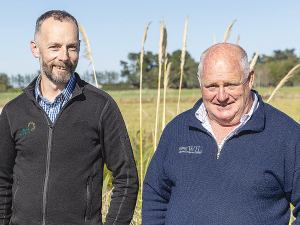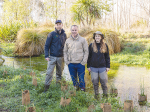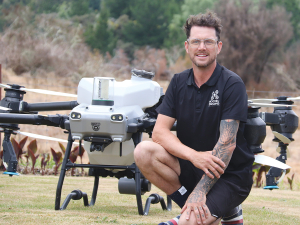During the last seven years, over 5000 native seedlings have been planted as part of Waimakariri Irrigation’s biodiversity project.
The project was launched in 2018 after 297 sites of ecological interest were identified across the irrigation scheme’s 44,000-hectare command area.
Fourteen projects are currently underway, with two projects at the Cust River, three projects at Burgess Stream and one project each at the Old Eyre and Hunters streams.
WIL biodiversity project lead Dan Cameron says the initiative aims to protect existing areas of ecological significance while also identifying sites for restoration that can improve biodiversity across the entire catchment.
“It’s not about doing projects here and there. We focus on areas of significance and look at sites that are connected to shareholder land and the wider catchment.”
The concept of connectivity is key to Cameron’s work, and he believes this will drive the success of the project over the long term.
“Connectivity is a key principle of biodiversity, and we can’t work on habitat creation and restoration in isolation. We need to consider connections between each site with to eventually create an ecological corridor that provides pathways for native fauna to follow.
“This is a longterm project over 30 to 40 years that extends beyond the irrigation scheme. We have already included local schools in this project and over time will broaden the scope to other organisations and the wider community.”
WIL chief executive Brent Walton says the map of key sites producing during the 2018 biodiversity survey has proved to be a useful tool for engaging with shareholders. “Having this map of all the sites has given our farmers a visual idea of how the work that they are doing on their farms connects with the entire catchment.
“If we work our way up from the mouth of the Waimakariri River there are areas where we have connections, and if we can fill in those areas, we can create a good pathway.”
The project has used technology such as drones to efficiently gather data from each restoration site which then can be shared via mapping software. Dan says technology is also helpful for practical aspects such as planting near farm infrastructure.
“We use the drone together with mapping software which provides data and metrics to track our progress.
“It is very efficient, and we use it to measure everything including practical issues such as which native plants will fit under pivots,” says Walton.
While improving and protecting biodiversity is a regulatory requirement for WIL, Walton and the cooperative view ecological restoration as part of their commitment to the broader community.
“Primarily, it’s the right thing to do. When you look at it from a catchment approach, what we do here on our farms impacts a non-WIL shareholder and the community downstream. We want to improve what we already have here in terms of biodiversity and then work together with other organisations and the community to create those long-term connections from the sea to the mountains.”



















